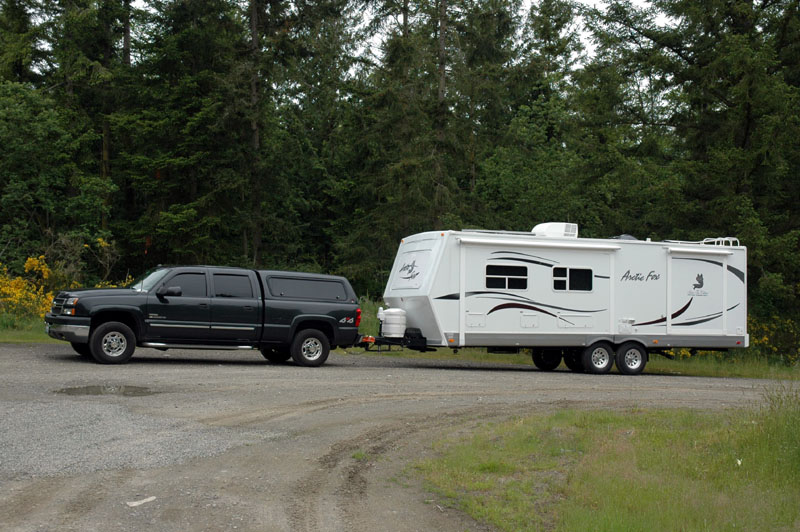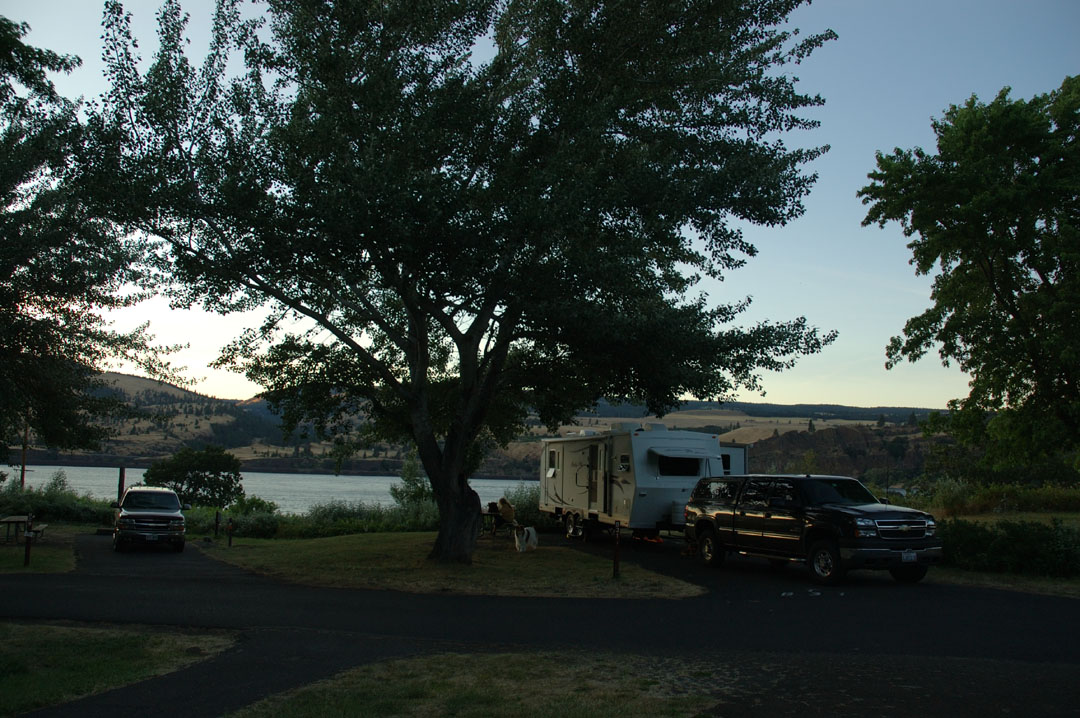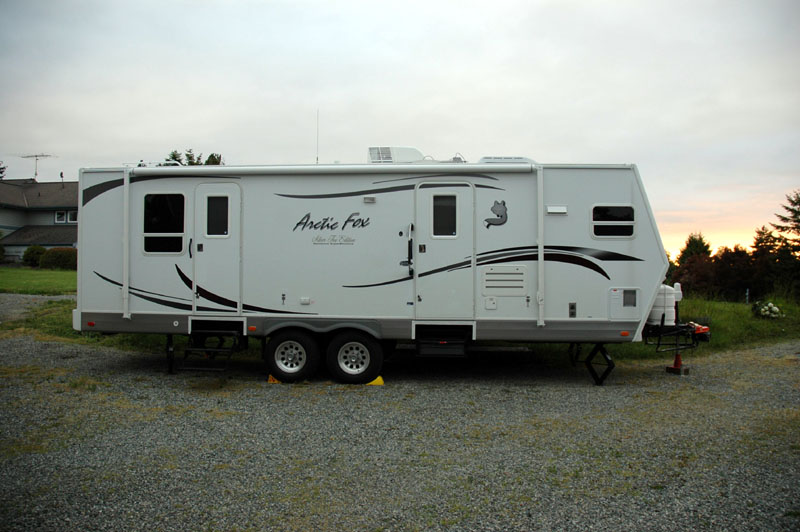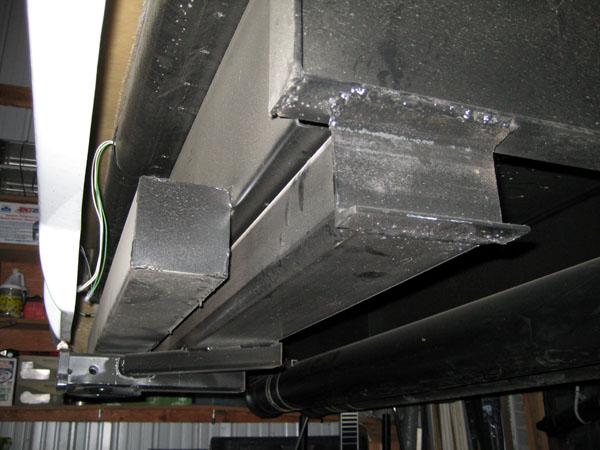 Why do retirees with unlimited time take fancy cruises with cocktail parties
and formal wear and see very little of the real Alaska?
Why do retirees with unlimited time take fancy cruises with cocktail parties
and formal wear and see very little of the real Alaska?
We're celebrating our 25th wedding anniversary with a return trip to
Alaska. Our anniversary was in January, and some years ago, we decided
that the next time we get married, it will be in the summer when the weather
is better for traveling to celebrate. Since #25 is a biggie, we
figured we'd pull out all the stops. After several years of talking
about taking a cruise around Cape Horn, CJ realized that she wanted to go
back to Alaska more than anything else. Our first RV trip to Alaska
was in 2004 with a Holiday Rambler Caravan. We were so new to RVing
that we'd only spent one night in the 10-year old trailer we had then before
we left for Alaska. We're convinced that the HRRVC folks put on better
caravans than any commercial outfit, and going on a caravan completely
eliminates almost all the hassle and risk of such a venture. Perhaps
too much because what we want now is an adventure, not just an RV trip.
The most obvious differences this time is our decision to take 2
significant side trips on the only roads in North America that go above the
Arctic Circle. The Dempster Highway to Inuvik, Northwest Territories
and the Dalton Highway to Dead Horse, Alaska. Each of these side trips
involves well over 400 miles of gravel road through the most isolated areas
in the United States & Canada imaginable. The roads are the primary
supply routes for the oil industry in the far north. The good
news--hopefully--is that most of the road is in decent condition. The
bad news is that some of it isn't. The worse news is that the truck
drivers are paid by the load, not the hour, so they drive as fast as
possible and in the process kick up clouds of gravel.
Imagine traveling from San Francisco to Chicago on a gravel road with
only a couple of gas stations along the way. That's what it will be
like by the time we've done both. As much as 240 miles between
services of any kind at all--and no cell phone coverage--means we have to be
prepared and as self-sufficient as possible. To get prepared, we did a
lot of research on what travelers on the roads needed, and then researched
how to best prepare both our truck and trailer. We practically had to
rob a bank to buy all the stuff we did. Now we're spending the next
couple of months
installing the stuff and working out the details. If you interested in
the details of all the preparations we made to the truck and trailer for
this trip, click here.

This photo was taken the day after we installed the Hensley Hitch

Memaloose State Park on the Columbia River, Oregon

Sitting in our driveway
 The day we took delivery. Note that we hitched up using an old hitch
without connecting the weight distribution spring bars. First, we
drove directly to the Washington State Police weigh station to weigh the new
trailer completely empty with absolutely nothing installed. Second, we
installed the Hensley Hitch the following day.
The day we took delivery. Note that we hitched up using an old hitch
without connecting the weight distribution spring bars. First, we
drove directly to the Washington State Police weigh station to weigh the new
trailer completely empty with absolutely nothing installed. Second, we
installed the Hensley Hitch the following day.

 A
photo of the receiver installed by Northwood. The installation
included the 1/4" thick rectangular tubing and channel welded to the rear of
the trailer frame rails, plus the two 1" square tubing side braces on each
side of the receiver. We requested that the receiver be mounted as
close as possible to being flush with the license plate portion of the rear
cap so what ever we connect to the receiver reduces our angle of departure
by the absolute minimum.
A
photo of the receiver installed by Northwood. The installation
included the 1/4" thick rectangular tubing and channel welded to the rear of
the trailer frame rails, plus the two 1" square tubing side braces on each
side of the receiver. We requested that the receiver be mounted as
close as possible to being flush with the license plate portion of the rear
cap so what ever we connect to the receiver reduces our angle of departure
by the absolute minimum.
How to build an Arctic Fox 29V
An annotated photo essay on the construction
of an Arctic Fox 29V